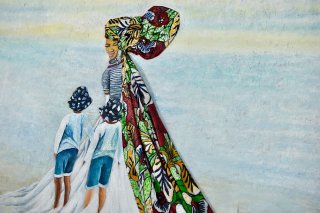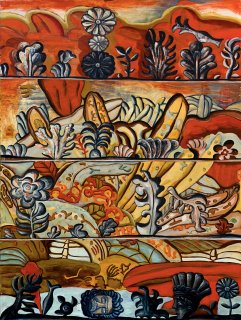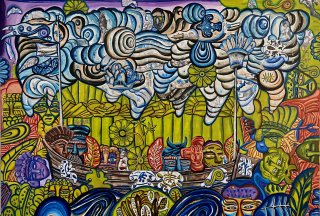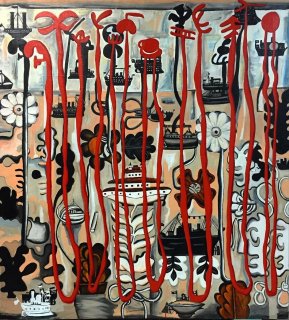
This piece describes the African rural upbringing of lack that can be so harsh, particularly on the girl child but as in Mia Angelou's words, "Just like dust, I rise." She rises as though untainted, like the motion and the grace of a ballerina.
Highlighting some of the growth of ballet directly on the African continent:
In recent decades, determined dancers and directors have also cultivated ballet companies rooted in African nations to bring classical and contemporary dance more fully into local cultural fabric. Pioneers like Martin Fredmann of South Africa founded some of the first professional African ballet troupes, while choreographers like Nigeria’s Amodu Mopolola Lanre have integrated traditional African dance aesthetics into their ballet productions. Companies like the Joburg Ballet, Cape Town City Ballet, and Les Ballets Nimba of Guinea are expanding African access and contribution to ballet as a global art form. Beyond building local audiences more diverse dancers now train in Africa’s schools, like the Debbie Turner Ballet Academy in South Africa or Tunisia’s Académie de Ballet. As African nations increasingly support homegrown ballet alongside long-established companies from Europe, ballet gains deeper roots as an art form belonging and relevant to all. The future horizons grow brighter for ballet to become as beautiful and distinctly African as the continent’s rich cultures themselves.
The elite world of classical ballet has notoriously lacked racial diversity, yet extraordinary African ballerinas have gradually transformed rigid stereotypes through sheer talent and will. Groundbreakers like Raven Wilkinson, one of the first African American ballerinas permitted to dance with a major touring company in the 1950s, courageously endured prejudice from racist audiences and fellow dancers to pave the way for greater inclusion onstage. Later pioneers like Lauren Anderson, who overcame economic hardship to become the Houston Ballet’s first Black principal dancer in 1990, inspired young African Americans to envision professional ballet as a possibility. Today Misty Copeland carries the torch blazing trails as American Ballet Theatre’s first Black female principal dancer, while inspiring greater access to ballet training in underserved communities. The grace and skill of these ballerinas provides living proof that ballet belongs to dancers of all races, slowly but surely expanding rigid perceptions of what a ballerina can look and be. Their passion continues opening doors large enough for the next generation of diverse dancers to leap through.






